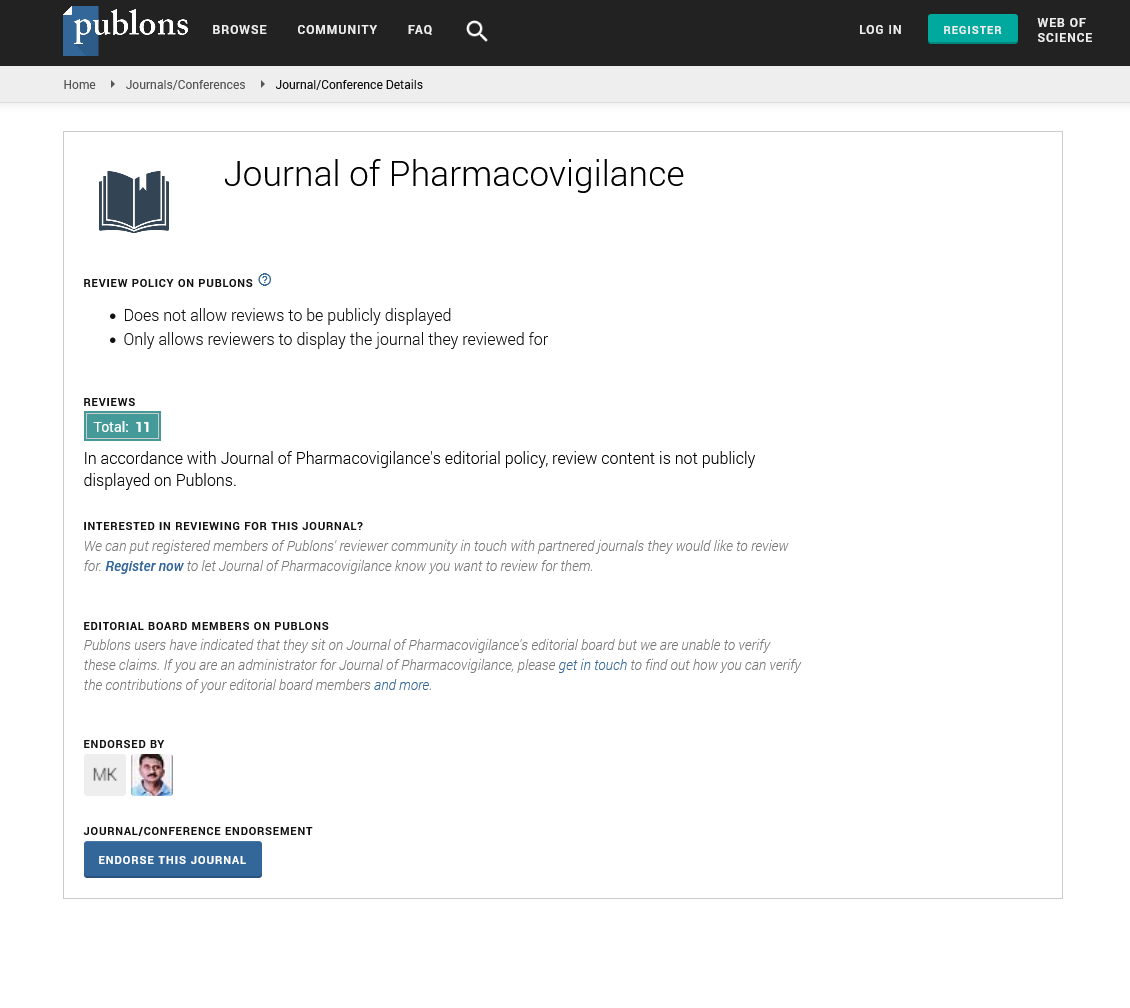Indexed In
- Open J Gate
- JournalTOCs
- The Global Impact Factor (GIF)
- RefSeek
- Hamdard University
- EBSCO A-Z
- OCLC- WorldCat
- Publons
- Euro Pub
- Google Scholar
Useful Links
Share This Page
Journal Flyer

Open Access Journals
- Agri and Aquaculture
- Biochemistry
- Bioinformatics & Systems Biology
- Business & Management
- Chemistry
- Clinical Sciences
- Engineering
- Food & Nutrition
- General Science
- Genetics & Molecular Biology
- Immunology & Microbiology
- Medical Sciences
- Neuroscience & Psychology
- Nursing & Health Care
- Pharmaceutical Sciences
Opinion Article - (2024) Volume 12, Issue 2
Cost-Effectiveness Analysis of Adverse Drug Reaction Management
Matsuoka Kanae*Received: 29-May-2024, Manuscript No. JP-24-25991; Editor assigned: 31-May-2024, Pre QC No. JP-24-25991(PQ); Reviewed: 14-Jun-2024, QC No. JP-24-25991; Revised: 21-Jun-2024, Manuscript No. JP-24-25991(R); Published: 28-Jun-2024, DOI: 10.35248/2329-6887.24.12.484
About the Study
Adverse Drug Reactions (ADRs) represent a critical challenge in healthcare, jeopardizing patient safety and imposing significant economic burdens. This manuscript explores the costeffectiveness of strong ADR management programs. We analyze the economic consequences of ADRs and evaluate the financial benefits associated with proactive strategies for detection, prevention, and intervention.
The fundamental of modern medicine lies in the safe and effective use of medications. However, ADRs remain a prevalent concern, affecting a substantial proportion of hospitalized patients. Studies report ADRs can increase length of stay and overall hospitalization costs by several thousand dollars per case. This translates to a substantial economic burden on healthcare systems globally. Effective ADR management programs offer a potential strategy to mitigate these costs while safeguarding patient well-being.
The economic impact of ADRs is multifaceted. Direct costs encompass extended hospitalizations, additional medications for treating the ADR itself, and the use of diagnostic tests to identify the cause. Indirect costs include lost productivity due to patient illness and potential workforce absenteeism among caregivers. Reported ADR costs vary considerably, influenced by factors such as healthcare system structure, medication type, and severity of the reaction.
Implementing a comprehensive ADR management program can yield significant cost savings. Early detection of ADRs allows for prompt intervention, potentially minimizing the severity and duration of the reaction. This translates to shorter hospital stays, reduced utilization of additional medications, and fewer diagnostic procedures. Additionally, strong ADR reporting systems can identify medication interactions and prescribing errors, leading to improved medication safety protocols and ultimately preventing future occurrences.
Cost-Effectiveness Analysis (CEA) is a valuable tool for evaluating the economic merits of ADR management programs. CEA considers both the program's associated costs and the health benefits it generates. Common metrics used in healthcare CEA include:
This measures the cost per unit of health outcome gained (e.g., cost per additional day complication-free). This compares the cost-effectiveness of one program to another. By employing CEA, healthcare decision-makers can assess the financial viability of ADR management programs and determine if the projected cost savings outweigh the initial investment.
While the cost-effectiveness of ADR management programs is potential, there are challenges to consider. Accurately measuring the program's impact on patient outcomes and healthcare utilization can be complex. Additionally, the long-term sustainability of such programs requires ongoing evaluation and adaptation.
Conclusion
ADRs pose a significant economic burden on healthcare systems. Implementing effective ADR management programs offers a compelling strategy to improve patient safety while optimizing healthcare budgets. Cost-effectiveness analysis can be a valuable tool in evaluating these programs and demonstrating their return on investment. Further research is necessary to refine methodologies for measuring program impact and develop standardized cost models across diverse healthcare settings. By prioritizing ADR management, healthcare systems can create a win-win situation, enhancing patient safety and achieving financial sustainability.
Citation: Kanae M (2024) Cost-Effectiveness Analysis of Adverse Drug Reaction Management. J Pharmacovigil. 12:484.
Copyright: © 2024 Kanae M. This is an open-access article distributed under the terms of the Creative Commons Attribution License, which permits unrestricted use, distribution, and reproduction in any medium, provided the original author and source are credited.

